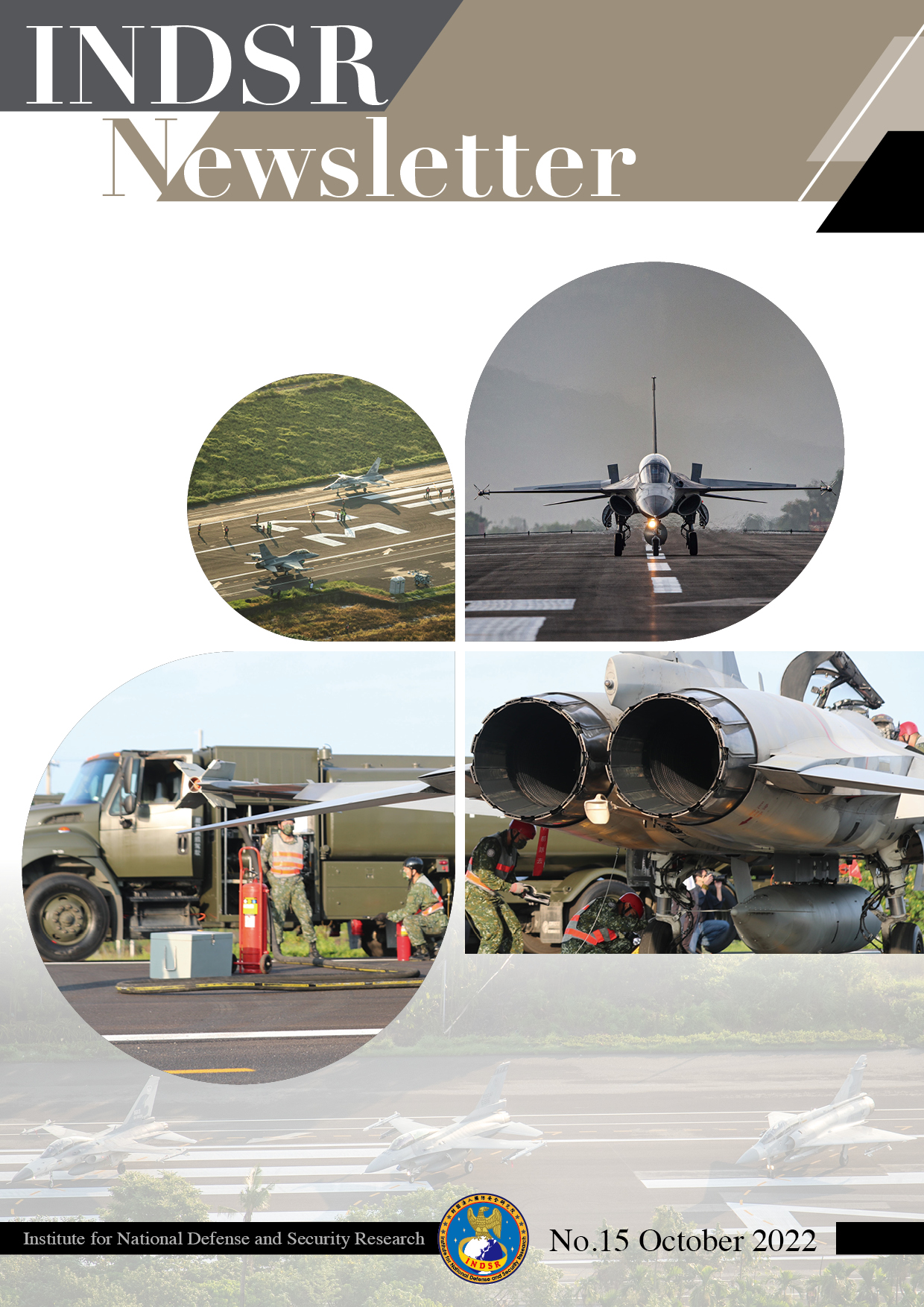Japan-India 2+2 Ministerial Meeting Highlight and Its Strategic Implications
2023.03.06
Views
61
PDF link:
On September 8, 2022, Japanese Foreign Minister Yoshimasa Hayashi and Defense Minister Yasukazu Hamada, along with Indian Foreign Minister Subrahmanyam Jaishankar and Defense Minister Rajnath Singh, held the second Japan-India Foreign and Defense Ministerial Meeting (commonly known as “2+2”) in Tokyo, which resulted in the issuance of the “Joint Statement Second Japan-India 2+2 Foreign and Defense Ministerial Meeting.” (Note: The first meeting was held in New Delhi on November 30, 2019.) This is the first “2+2” meeting between Japan and another country since Prime Minister Fumio Kishida reshuffled his cabinet after the Liberal Democratic Party won the Senate election in July 2022.
It has been less than a month since the end of China’s military exercises around Taiwan. At the same time, Russia was holding its “Vostok-2022” military exercise with participation from India while Russian President Vladimir Putin inspected the exercise.[1]Therefore, the sudden visit of the Indian foreign minister and defense minister to Japan for the highly strategic “2+2” meeting has attracted considerable attention from the international community. Based on the information released by the Japanese government, this article discusses the key points of the talks and their strategic implications.
Highlights of the second Japan-India “2+2” talks
Summarizing the Joint Statement of the talks and the relevant information released by Japan’s Defense Ministry, the topics of the talks can be divided into four major areas:
1.Executive summary: the two countries recognize their close cooperation in bilateral, multilateral, regional, and international situations.
2.Cooperation in the Indo-Pacific region:
(1)The two countries share the strategic goal of achieving a “Free and Open Indo-Pacific” (FOIP), which opposes unilateral changes to the status quo by force, advocates peaceful resolution of disputes based on international law, and respects the sovereignty and territorial integrity as well as a rules-based global order.
(2)Both countries support the aforementioned FOIP idea, India’s “Indo-Pacific Oceans Initiative” (IPOI),[2] and the “ASEAN Outlook on the Indo-Pacific” (AOIP) advocated by the ASEAN members.
3. Bilateral security cooperation:
(1) The two countries will continue to promote regular bilateral and multilateral exercises, including the Dharma Guardian annual Army exercise, the JIMEX Navy exercise (held every other year), and the Malabar annual Navy exercise; joint fighter training will be scheduled as soon as possible.
(2) Both countries will continue to discuss cooperation in weapons and technology;
(3) Both countries welcome the establishment of a consultation mechanism between their joint staff headquarters;
(4)Both countries welcome cooperation between their maritime police services;
(5) Both countries will strengthen cybersecurity cooperation and maintain discussions on economic security issues;
(6) Japan expressed its intention to review options, including “counter-attack capabilities,” and to increase its defense budget within five years for strengthened national defense as India showed its support to the decisions;
4. 4Regional situation: The two countries exchanged views on international and regional situations such as Ukraine, the East Sea, the South Sea, North Korea, and South Asia.
Self-explanatory anti-China connotation
Although the Joint Declaration does not specify individual countries, it emphasizes “a rules-based global order,” “respect for the integrity of territoriality and sovereignty,” and opposition to “attempts to unilaterally change the status quo by force” that are obviously directed at Russia and China.
It is worth noting that the talks mentioned the “Japan-India Mutual Supply of Goods and Services Agreement,” under which the Army of both countries can provide each other with logistical services such as the supply of food, fuel, and ammunition.[3]The two countries can use each other’s bases and other military facilities, especially the Indian forces can use Japan’s defense facilities in the African country of Djibouti, while the Japanese Self-Defense Forces can use India’s facilities in the Andaman and Nicobar Islands. As China is developing the strategy of establishing a strategic foothold in the Indian Ocean littoral states through the “Pearl Chain” approach, such cooperation between India and Japan has the significance of developing a strategic confrontation with China.
The “2+2” talks also emphasized the promotion of cooperation in defense equipment and technology. Although not specified in the publicized information, it is assumed that the equipment Japan has so far wanted to export will be included in the discussion as the cooperation between the two countries in equipment development is on the agenda. For example, Japan is marketing to India the US-2 seaplane used by the Maritime Self-Defense Force, which can take off from sea or land with more than 15 tons of payloads and have a range of 4,700 km to perform maritime rescue, search and rescue, and transportation missions. More importantly, India can use the aircraft to strengthen its grasp of the maritime situation to combat piracy as well as to detect and monitor the movement of the PLA Navy in the Indian Ocean.[4]
In addition, the meeting also covered the issue of Japan-India military exercises, of which the promotion of Japanese and Indian warplane training is also imperative. In fact, the two countries had a joint exercise planned for late 2019, and it was rumored that India was scheduled to participate in the exercise with Su-30 jets. The plan was postponed due to the outbreak of COVID-19 and has not yet been realized.[5]In recent years, Japan’s relationship with China has been in dispute, and that with Russia is also at odds due to the Russo-Ukrainian conflict. Since both China and Russia use Su-30, Japan can learn more about its performance in air combat through joint exercises with the Indian Air Force. The meeting also discussed the establishment of a consultation mechanism between the two countries’ joint staff headquarters. The objective of the mechanism should be strengthening the coordination and planning functions of future joint exercises between their armed forces.
Strategic implications for Japan and India’s relations with Russia
It is well known that India is highly dependent on China for its economy, while most of its weapon systems are acquired from Russia. Since the US-China relation breakthrough in 1972, India has been strategically using Russia to keep China in check for years, which naturally constitutes the important background for India’s abstention from the UN resolution condemning Russia’s invasion of Ukraine and its participation in Russia’s “Vostok-2022” exercise. In particular, Vostok-2022 covered the “northern territories” over which Japan claims sovereignty, which upset the Kishida government; Japan’s Chief Cabinet Secretary Matsuno Hirokazu also expressed regret on September 5 that he was concerned about Russia’s movements. Under such circumstances, the Indian foreign and defense ministers rushed to Japan to participate in the “2+2” talks that are considered highly strategic, and most of the topics were focused on defense cooperation (the Joint Declaration contents show that the talks were more on defense than diplomacy), which actually had the effect of appeasing Japan.
For India, Russia’s power has declined due to its invasion of Ukraine, and recently it is gradually showing a tendency to move toward China. In the future, India’s “using Russia to contain China” strategy may thus become more and more difficult to realize. As a result, the incentive to cooperate with countries that take an “anti-China/prevent-China” stance should be stronger than in the past. With its intractable confrontation with China, Japan is clearly a worthy ally for New Delhi to pursue.
Since the Joint Statement does not mention the QUAD security talks (mentioned in the first 2+2 talks), nor does it name China and Russia, Japan could have been considering India’s position. However, if China and Russia continue to draw closer together in the future, it is expected that the motivation to strengthen strategic cooperation between India and major countries such as Japan will continue to develop. In India’s eyes, the question that requires more attention than the “Russia-China draws closer” is whether Russia, weakened by its invasion of Ukraine, will be willing to play the “junior partner” role to China in the future. If so, it will not be good news for the New Delhi authorities, and the day of substantial adjustment of its “non-alignment” foreign policy will be on the horizon soon.
Although the Joint Statement did not indicate that the Taiwan Strait issue was mentioned, Japanese Defense Minister Hamada revealed, at a press conference the next day, that Indian Defense Minister Singh had expressed concern about the current situation in Taiwan.[7]Sharing the same universal values of democracy and freedom as India, Taiwan has always regarded China as a major threat and has long maintained a sovereign stance without compromise. It should be an important partner for India in its China strategy. Taiwan and India may refer to the “Taiwan-Japan Diplomatic and Defense (2+2) Exchange of Ruling Parties” held in 2021 and start a similar strategic dialogue to seek opportunities to strengthen exchanges in diplomatic and security issues.
(Originally published in the “National Defense and Security Real - time Assessment”, September 14, 2022, by the Institute for National Defense and Security Research.)
(The contents and views in the assessments are the personal opinions of the author, and do not represent the position of the Institute for National Defense and Security Research.)
[1]“China and India Participate in Russian Military Exercises, Putin Visited,” Central News Agency, September 6, 2022, https://www.cna.com.tw/news/aopl/202209060368.aspx.
[2] The IPOI was Launched by India’s Prime Minister Modi on November 4, 2019, at the 14th East Asia Summit. It Consists of Seven Categories: “Maritime Security,” “Maritime Ecology,” “Marine Resources,” “Capacity Building and Resource Sharing,” “Disaster Risk Reduction and Management,” “Science, Technology and Academic Cooperation,” and “Trade, Connectivity and Maritime Transport.”
[3] “The Agreement Between the Government of Japan and the Government of the Republic of India Concerning Reciprocal Provision of Supplies and Services Between the Self-Defense Forces of Japan and the Indian Armed Forces, “ Japanese Ministry of Foreign Affairs, September 10, 2020, https://www.mofa.go.jp/mofaj/files/100091751.pdf; 〈日・インド物品役務相互提供協定(日印 ACSA)の署名〉,《日本防衛省》, 2020 年 9 月 10 日,https://www.mofa.go.jp/mofaj/press/release/press4_008742.html.
[4] It’s reported that the case of exporting US-2 to India has not yet been realized due to the budget, technology transfer, and production conditions proposed by India. Judging from the policy direction of the current Japanese government that emphasizes the fostering of defense industries, there is still a chance for this case to be further pursued.
[5] 関賢太郎 , 〈インド空軍のロシア製戦闘機が日本へ〉,《乗りものニュース》,2020 年 1 月 24 日,https://trafficnews.jp/post/93148; Lu Bohua, “India Sends Su-30 Fighter to Joint Exercises with Japan. Chinese Expert: Malicious Betrayal of China and Russia,” China Times, August 30, 2021, https://www.chinatimes.com/realtimenews/20210830004854-260409?chdtv.
[6]“Japanese Chief Cabinet Secretary Expresses Regret over Russian Military Exercises in the Four Northern Islands,” Kyodo News, September 5, 2022, https://tchina.kyodonews.net/news/2022/09/97bfb0e6c83d.html.
[7] “Minister of Defense Press Conference,” Ministry of Defense of Japan, September 9, 2022, https://www.mod.go.jp/j/press/kisha/2022/0909a.html.


